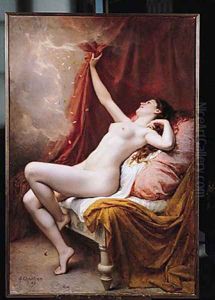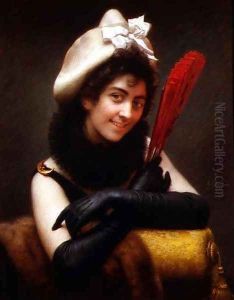Alexandre-Jacques Chantron Paintings
Alexandre-Jacques Chantron was a French painter and teacher, born in 1842 in Nantes, France. He is known for his contributions to academic art in the late 19th and early 20th centuries, a period that was marked by a strong adherence to traditional techniques and themes, even as the art world began to shift towards modernism. Chantron was a product of this academic tradition, excelling in the creation of historical, mythological, and allegorical paintings, which were highly valued during his time.
Chantron trained at the École des Beaux-Arts in Paris, which was the premier art institution in France, studying under renowned artists such as Alexandre Cabanel and William-Adolphe Bouguereau. These teachers were pivotal in shaping Chantron's style, which was characterized by its meticulous attention to detail, vibrant color palette, and emphasis on idealized human forms. His education and talent earned him several accolades, including the esteemed Prix de Rome in 1875, which allowed him to study in Rome, further influencing his artistic development.
Throughout his career, Chantron exhibited his works at the Paris Salon, the official art exhibition of the Académie des Beaux-Arts in Paris. His paintings were well-received, earning him a reputation as a skilled painter of his time. Chantron's works were celebrated for their beauty and technical proficiency, capturing the essence of academic art that was prevalent during his lifetime.
In addition to his painting, Chantron also devoted a significant portion of his career to teaching. He was a respected instructor at the École des Beaux-Arts, where he influenced a new generation of artists, imparting the techniques and values of the academic art tradition. Through his teaching, Chantron played a role in sustaining the academic approach to art during a time when new movements, such as Impressionism and Post-Impressionism, were beginning to emerge.
Alexandre-Jacques Chantron passed away in 1918, leaving behind a legacy as a celebrated artist and educator. His works continue to be admired for their beauty and craftsmanship, representing an era of art that valued classical ideals and the mastery of traditional techniques. Although the art world has evolved significantly since Chantron's time, his contributions to French academic art remain an important part of the country's cultural heritage.

